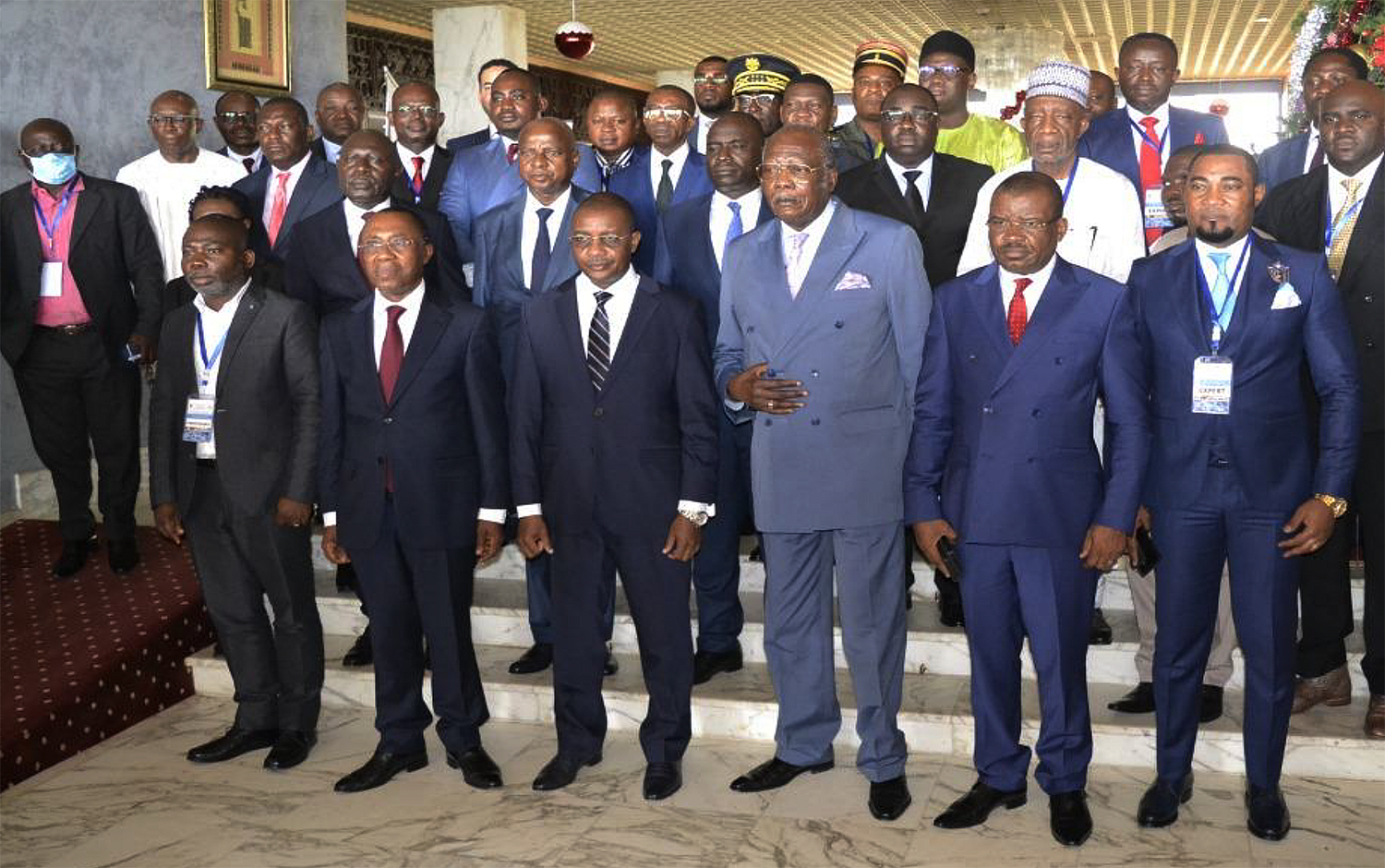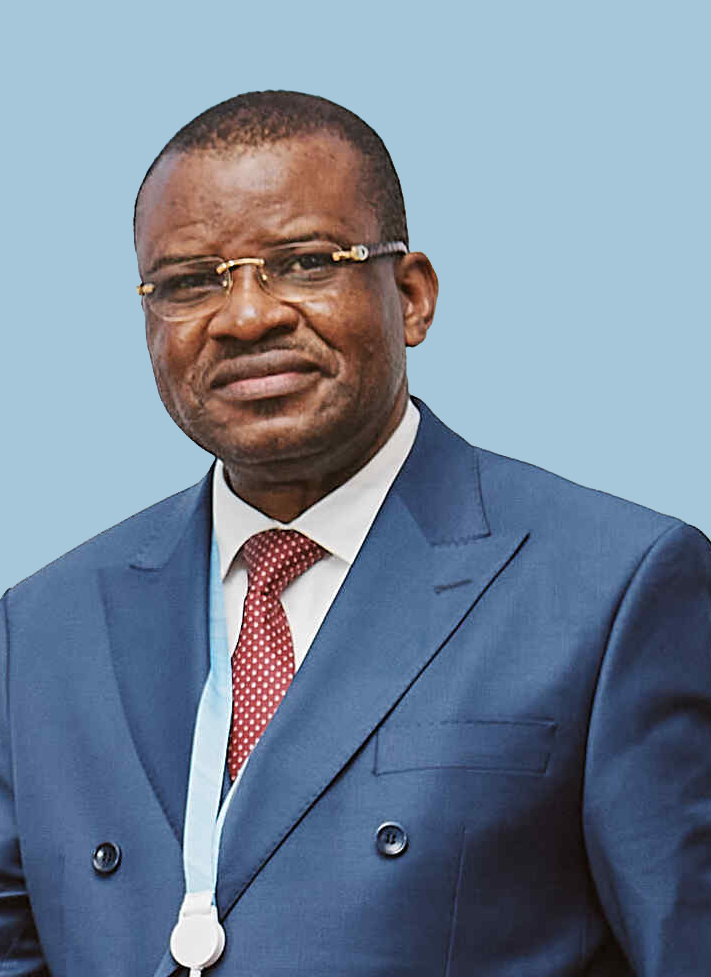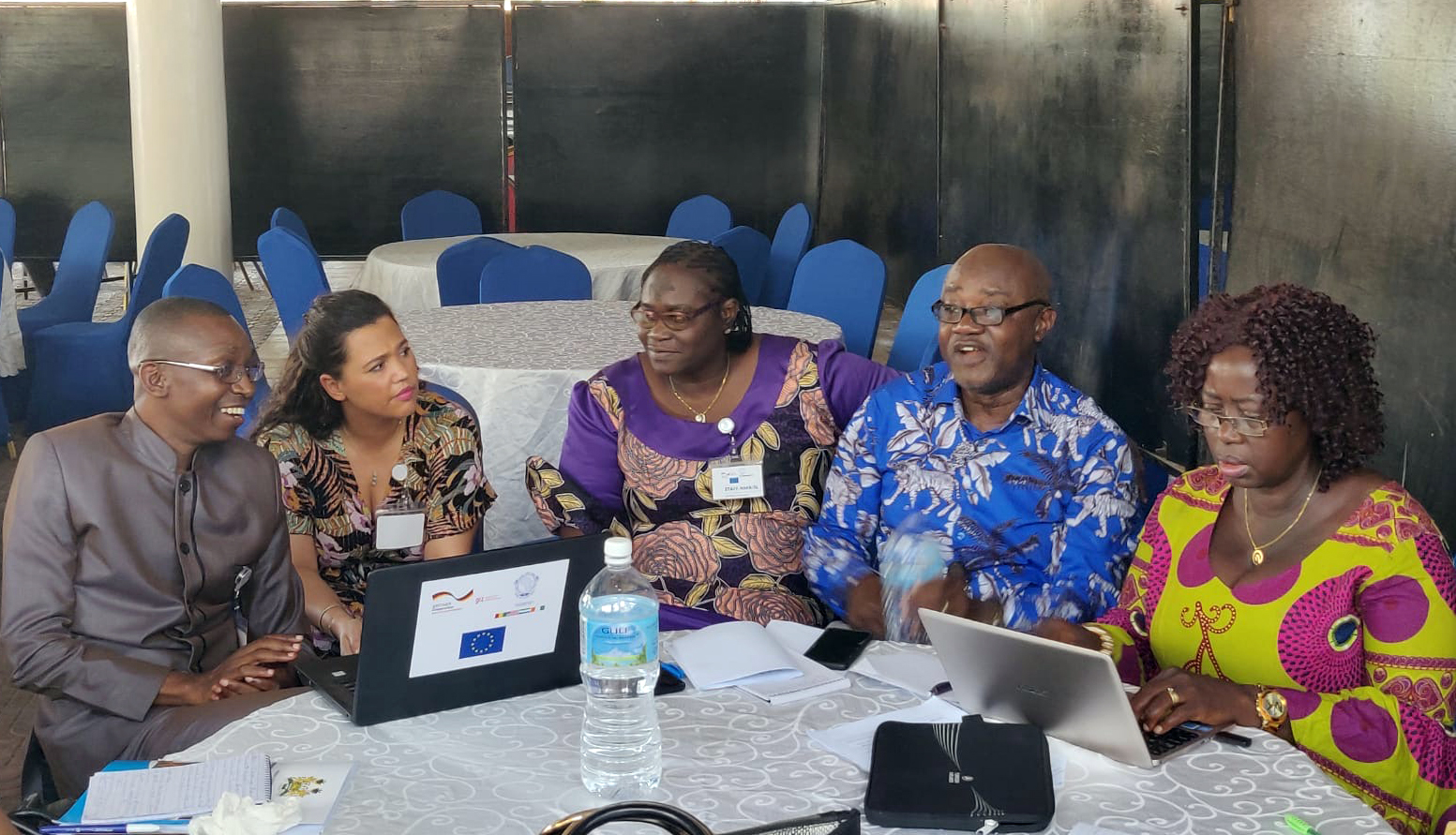Supporting the viability
of artisanal and small-scale mining

Participants in the three-day workshop in Yaoundé, Cameroon, in December 2021, which focused in a regional approach to the issue of law enforcement in the Central African countries where artisanal and small-scale mining are conducted.

By Steven Benson,
WDC Communications
While rough diamond production has traditionally been dominated by a handful of industrialized mining companies, the Kimberley Process (KP) has focused predominantly on the impacts upon and the impacts of artisanal and small-scale mining (ASM).
Largely informal and much of it taking place at the subsistence level, ASM constitutes not more than 15 percent of total world production. Nonetheless, it provides a living income to more than 95 percent of those physically involved in diamond mining, and more than 10 million of their dependents, most of whom live in some the world’s most economically challenged regions.
These numbers are estimates. Because local governance structures in the ASM mining regions are typically fragile, the reliability of data is difficult to confirm. What is certain is that, while they play a more limited role in terms of global production, artisanal and small-scale miners punch considerably above their weight when it comes to the industry’s potential economic impact on society.
Many regard the Kimberley Process Certification Scheme (KPCS) as first and foremost a mechanism to facilitate the elimination of conflict in diamond mining areas. But conflict resolution is not only a primary goal of the KPCS — it is also a means for achieving another key objective, which is creating the conditions necessary for sustainable economic and social development, most often in very regions where artisanal and small-scale diamond miners are active.
But it is in those places that the KPCS is most difficult to apply. For whereas the internal controls that are critical for KP certification to be managed can be relatively easily introduced where mining is industrialized and well structured, in the alluvial diamond fields where ASM is more common — many of them remote, with limited infrastructure and spread over wide expanses — verifying origin and monitoring the treatment of miners and their dependents is considerably more challenging.
What this means is that difficulties experienced in complying with the KPCS, the very system created to protect artisanal miners from exploitation, can become a barrier of entry for ASM miners from legitimately accessing the market.
Helping ASM miners join the formal economy
The predicament of the ASM sector was recognized shortly after the launch of the KPCS in 2003. Fewer than three years into the program, at the KP’s annual Plenary Meeting in 2005, a declaration was made in support of artisanal and small-scale miners, and it included a set of recommended internal controls for the alluvial mining areas, to ensure traceability from mine to export, to regulate mining itself, to regulate the trade in ASM diamonds, to prevent illicit cross-border trade and to encourage ASM miners to join the formal economy.
An ad-hoc subgroup of KP’s Working Group on Monitoring was charged with overseeing the process, and in November 2007 it evolved into a fully-fledged body within the KP, called the Working Group on Artisanal and Alluvial Production (WGAAP). Its stated aim was to promote more effective internal controls on the production and trade of alluvial diamonds, ensuring that only diamonds produced and traded in accordance with national legislation and KPCS standards could be exported or polished locally.The concerted effort to support ASM received an additional boost during the midyear KP Intersessional meeting in Washington, D.C., in 2012. On the margins of the event, USAID, the Diamond Development Initiative, and the World Bank organized a conference called “Enhancing the Developmental Potential of Artisanal and Small-Scale Mining.”
At the end of the conference, a lengthy document called the Washington Declaration was released. It outlined ways of integrating development principles with KP implementation. Practical steps were listed to improve the formalization of artisanal mining and improve social conditions in ASM communities.

Maurice Miema, Chair of the KP’s Working Group on Artisanal and Alluvial Production (WGAAP).
In particular, the Washington Declaration called for revising the terms of reference for the WGAAP to include a focus on coordinating development initiatives, disseminating best practices in the ASM sector and mitigating development constraints as they relate to KP compliance.
The regional approach in West Africa
Over the past several years, the WGAAP has been closely associated with a series of initiatives known within the KP as the regional approach. Its basic premise is that, to optimize the developmental potential of ASM activity in their territories, neighboring countries should cooperate in support of the informal diamond sector.
Following a KP review visit conducted in Liberia in 2013, it was noted that most of the countries neighboring Côte d’Ivoire, which at that stage had been under sanction since 2005, faced similar challenges in respect to internal controls. It was thus recommended that a regional approach to address such challenges should be followed.
In 2014, WGAAP reached out to the Mano River Union (MRU) to initiate a cooperative program to implement the minimum requirements of KPCS and prevent the illicit flows of rough diamonds in West Africa. The MRU is a grouping of countries that include Sierra Leone, Liberia, Côte d’Ivoire and Guinea. It was established in 1973 to encourage mutual economic growth, social progress and cultural advancement, through collaboration and the provision of mutual assistance in the economic, social, technical, scientific and administrative spheres.
The MRU diamond project was made possible thanks to funds provided by the European Union (EU) and the German Federal Ministry for Economic Cooperation and Development (BMZ), and the technical expertise of GIZ, the German international development agency, which was charged with implementing the plan.
Areas covered by the MRU program have included the harmonization of taxes levied on diamonds, so as to remove incentives for smuggling, challenges related to the collection of taxes by governments, and formalizing the financing system. Also discussed were health, safety and environmental standards, the protection and empowerment of women and youth, adherence to universal principles on human rights, the threat to the artisanal mining sector posed by synthetic or laboratory-grown diamonds, and the contribution to capacity-building by more accurate and fair rough diamond valuation.

WDC Executive Director Elodie Daguzan (second from left) joined a Kimberley Process workshop organized by the Mano River Union in Freetown, Sierra Leone, in February 2020.
The regional approach in Central Africa
In April 2019, WGAAP kicked off a second regional initiative, this time in Central Africa. It began with a meeting in Kinshasa, capital of the Democratic Republic of Congo (DRC), and resulted in an action plan. One of the priorities listed was to fight illicit transactions of diamonds and it was stressed that law enforcement agencies in the region needed to be involved to successfully tackle the challenge. More specifically, it was agreed to organize a law enforcement training workshop within the next few months.
But then the COVID pandemic intervened, and plans were set back. Finally, in December 2021 a second workshop for the Central African group was held, in Yaoundé, Cameroon. The three-day workshop gathered the heads and representatives of KP Focal Points of Angola, Cameroon, the Central African Republic, DRC, Gabon and the Republic of Congo, as well as representatives and experts from the respective countries’ law enforcement agencies, judicial authorities, customs, financial intelligence units, ministries of mining, ASM support agencies and diamond evaluation agencies. Also participating were the KP Civil Society Coalition (CSC) and the World Diamond Council (WDC).
Headed by WGAAP’s long-time chair, Maurice Miema, the Yaoundé meeting was a high-profile gathering, under the patronage of Gabriel Dodo Ndoke, Minister of Mines, Industry and Technological Development of Cameroon, and also attended by Pierre Oba, Minister of State and Minister of Mining and Geology of the Republic of Congo.
The workshop was divided into five units, mostly focusing on issues related to law enforcement. They included the campaign against diamond fraud in Central Africa, investigations into the illicit trafficking of precious stones, experiences of the represented countries in the fight against diamond fraud and smuggling, the role of financial intelligence units in the various countries in respect to the physical cross-border transport of cash and other negotiable bearer instruments, and synergies of action between the financial intelligence units and the authorities in the various countries in charge of criminal investigations and prosecutions.
Speaking on the opening day of the workshop, WDC President Edward Asscher stressed the crucial role played by governments in securing a safe working environment for the ASM sector. “They are obliged to do all they can to stop illegal cross-border diamond trafficking, as well as to be more visible at diamond-mining sites, making sure that law and order is respected, providing extra confidence to the alluvial and other diggers working there,” he said.






